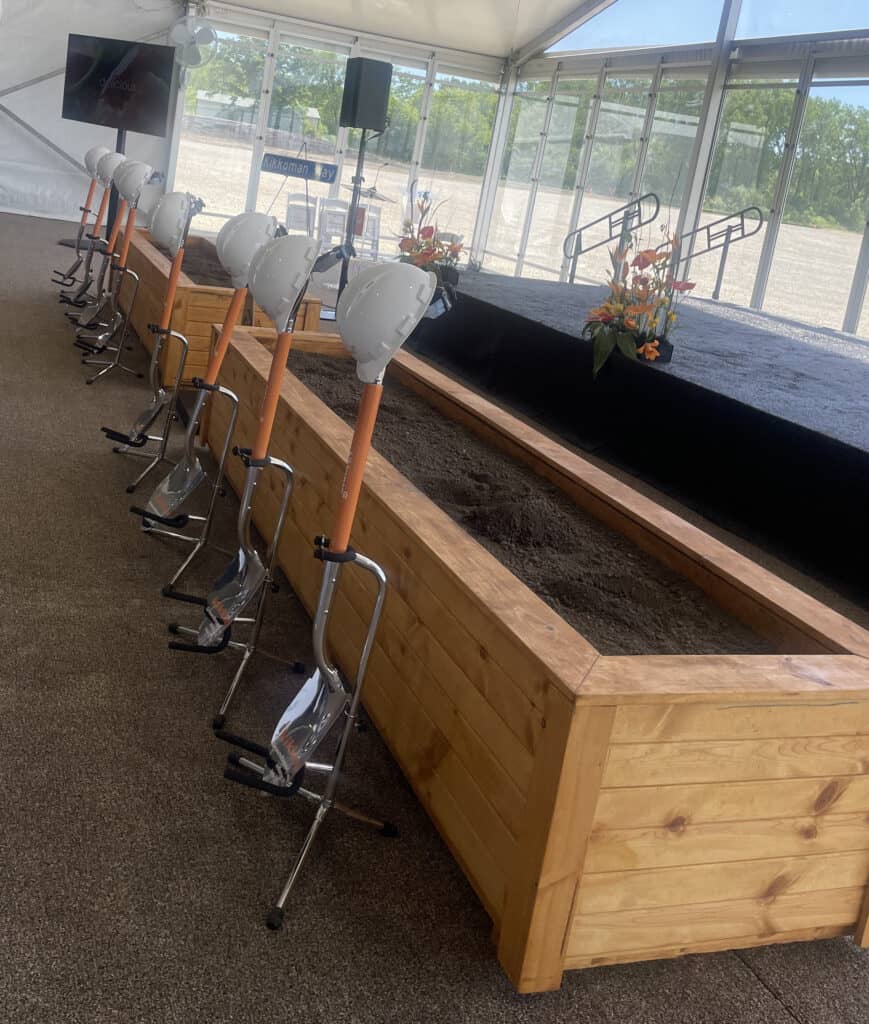In a spectacular event showcasing collaboration and growth, Kikkoman Foods Inc. recently broke ground on a new state-of-the-art manufacturing facility in Jefferson, Wisconsin. This significant event marks another milestone in the longstanding relationship between Kikkoman and the state of Wisconsin.
Why is This Groundbreaking Important?
This groundbreaking ceremony was not just another corporate event; it was a testament to decades of mutual trust and cooperation. The new facility represents a major investment of more than $800 million, including a $560 million investment in Jefferson and an additional $250 million expansion at Kikkoman’s existing facility in Walworth. Governor Tony Evers, along with Kikkoman Chairman and Honorary CEO Yuzaburo Mogi, Wisconsin Economic Development Corporation (WEDC) Secretary and CEO Missy Hughes, and other local leaders, gathered to celebrate this remarkable step forward.

“Today’s events are a watershed moment in Wisconsin’s relationship with a global brand like Kikkoman,” said Gov. Evers. “The strong connection between Wisconsin and Japanese businesses like Kikkoman has been instrumental in driving Wisconsin’s economic growth, bolstering innovation, and creating valuable employment opportunities.”
The Impact on Southcentral Wisconsin
The new facility in Jefferson is set to create at least 83 high-paying jobs over the next 12 years. This is a significant boost for local employment and economic development. The facility will also serve as a model of modern, highly automated food manufacturing, contributing to Wisconsin’s burgeoning reputation as a hub for food and beverage innovation.
“The site selection process is incredibly competitive and Kikkoman’s choice to establish roots in Jefferson County underscores the county’s reputation as a prime destination for food and beverage manufacturers,” said Deborah Reinbold, President of Thrive Economic Development. “Transformative projects of this magnitude require the dedication and cooperation of many, and this success is a testament to our collective efforts.”
MadREP VP of Economic Development Everett Butzine amplified her sentiments, stating, “Supporting our county partners at Thrive through the site selection process has been profoundly gratifying. At MadREP, we are fortunate to collaborate with such outstanding county partners.”
Jefferson Mayor Dale Oppermann emphasized the importance of Kikkoman’s investment by stating, “Kikkoman’s decision to invest in Jefferson underscores the strength and appeal of our local food and beverage niche. We appreciate the trust Kikkoman has placed in our community and look forward to a long, prosperous partnership.”
Role of Regional Economic Development
The Wisconsin Economic Development Corporation (WEDC) has been a pivotal player in facilitating this investment. WEDC will award up to $15.5 million in performance-based tax credits to support Kikkoman’s expansion efforts. “WEDC is pleased to support Kikkoman’s growth in our state and the bright future it promises for our communities,” said Missy Hughes, Secretary and CEO of WEDC.
The collaborative efforts between state and local governments, economic development agencies, and private enterprises underscore the importance of regional economic development in fostering large-scale investments. These partnerships are crucial for attracting and retaining global businesses, which in turn drive job creation and economic growth.
Economic Partnership with Japan
Japan has long been a significant partner for Wisconsin, both economically and culturally. There are currently 81 Japanese companies with over 224 operations throughout the state, creating approximately 9,000 jobs. Since 2013, Japan has invested over $2.6 billion in Wisconsin, making it the second-largest investor in the state after Canada.

Governor Evers’ recent participation in the White House State Dinner in honor of Prime Minister Kishida Fumio further highlights the deep-rooted economic ties and the mutual benefits derived from such partnerships. This solidifies Wisconsin’s role in fostering international economic relationships and underscores the state’s commitment to maintaining and growing these valuable connections.
Conclusion
The Kikkoman groundbreaking ceremony in Jefferson is more than just the start of constructing a new facility; it marks a new chapter in Wisconsin’s economic story. With substantial investments, job creation, and the continuous support from regional economic development entities, Kikkoman’s expansion promises a brighter future for Southcentral Wisconsin.
If you’re keen on learning more about how investments like these can impact local economies or are interested in exploring business opportunities in Wisconsin, our team of experts is here to help. Contact us today to discover how we can assist you in navigating this dynamic economic landscape.

